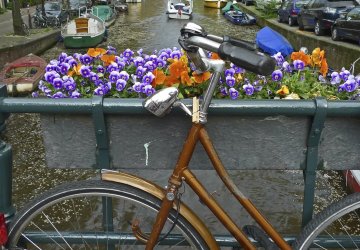Where do we leave all these bicycles?
Of course the Netherlands is a premier cycling nation. Last year the cycling craze peaked in the Netherlands: some 22.5 million bikes were on the road, producing an average of 1.3 bikes per Dutch resident. According to Statistics Netherlands (CBS), an average of 900 kilometres is travelled per bike, mainly for school, work and to the railway station. Upon arrival at the destination, all these bikes have to be parked of course.
At railway stations in particular, we find, sometimes gigantic, cycle parking facilities. Currently, for example, there are 10,000 places for parking your bike at Amsterdam Central Station, a number to be doubled in the years ahead. Last year Utrecht saw the introduction of a completely new ‘bicycle park’ at its station, with space for 4,200 bikes. So it should be obvious: major cities are doing all they can to meet the huge demand for bicycle parking. However, this creates a new problem. As how do you know where there’s space, when you arrive on your bike at one of these huge facilities?
Finding your bike again with the help of a sensor
This is where sensors come in. Imagine: you equip each place where a bike can be parked with a sensor, which indicates whether that place is occupied. This information is forwarded to information boards at the entrance to the facility, letting the user know exactly which part or which floor of the facility has space available for parking. This system is already in operation in Utrecht and in other places. As a result of the information these sensors collect, there are no unnecessary blockages, cycle movements and frustrations.

